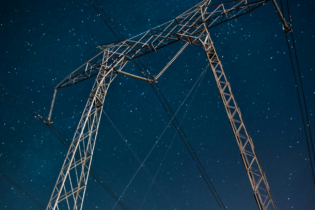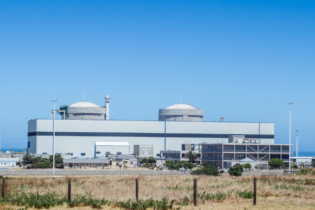State-owned power utility Eskom set to implement R178 billion Transmission Development Plan over the duration of 2022 and 2031 to lengthen the network to enable the integration of 30 GW of new renewable, generation capacity.
The power utility that has spent over R47.4bn between 2009 and 2019 on diesel to keep the lights on insists that the capacity is set to result largely in the form of solar photovoltaic and onshore wind generators that will be built in areas with limited existing grid infrastructure. Due to the citing of confidential agreements, Eskom could not supply the total paid to each individual distributor. However, for the implementation process is said that the plan needs a step-change in the pace at which new transmission lines are built relative to the previous five years and a massive acceleration in the deployment of new transformer capacity. According to accumulated data, the highest-level expenditure on diesel appeared between March 2013 and March 2016, making up a total of R33.4bn, more than half of the diesel spent in the complete 10-year period in just three years could be accounted for. Segomoco Scheppers, group executive for transmission revealed that R144-billion would be allocated to network expansion projects while Eskom paid out R30bn on maintenance, exceeding the three previous years put together. To account for the recent load shedding matter Schepper’s said, “The whole region operates at a frequency of 50Hz from an electrical perspective. If the frequency is too high or low, it leads to equipment and plants tripping. This is undesirable and different protective measures come into play.’’ “What we do know is that Zambia experienced a blackout over the weekend and lost close to 20 000MW. As part of being an interconnected network, there were power swings observed between the Zambian and Zimbabwean networks where a lot of power flowed into Zimbabwe, which resulted in over frequency,” he added. The plan intends to roll out new lines over the ten-year period at 8 406 km and introduce 119 large transformers and introduce 58 970 MVA of transformer capacity.For this to be successful the power utility would need to construct 2 598 km lines and move 35 new transformer units between 2022 and 2026, resulting in a representation of 73% increase in line construction relative to what was built in the five years from 2017 to 2021 and a 94% increase in transformer deployments consecutive periods.
Institute of Economic Justice Brian Kamanzi, energy policy researcher revealed that the power utility has not been forthcoming with the severity of overload in the power stations. “The issue is that Eskom has not effectively communicated the severity of the crisis. It is true that the municipalities are not doing their part, but what we are not hearing is the power utility taking accountability for the poor levels of its fleet. I think the response from municipalities is due to Eskom downplaying the situation,” he said. “Eskom had stated we have a shortfall of four to six gigawatts of generation capacity and a number of projects are already in the pipeline, with some hopefully coming online within the next year to 18 months. Until then, we will be operating at the margins, which means when unplanned trips occur at the existing plants, we will, unfortunately, continue to face load shedding,” he added. Leslie Naidoo, Senior manager for grid planning acknowledged that the figures are “large and scary”, especially considering Eskom’s financial and capacity constraints. The plan is hypothecated on moderate yearly demand growth of 2% over the period, resulting in peak demand rising to 43 GW by 2031 from 35 GW currently. Scheppers revealed that the biggest expansion of the transmission network has been important for the connection of utility-scale renewable generation projects, in correlation with the Integrated Resource Plan of 2019, the Grid Code, and to put Eskom in a position to meet its net-zero emissions by 2050 aspiration, bearing in mind that Eskom CEO Phakamani Hadebe informed the media it would cost an estimated R18bn to finish the construction of power stations. “The global shift towards renewable-energy generation will undoubtedly have an impact on Eskom and will shape the transmission utility of the future,” he concluded. Noting recent reports by President Cyril Ramaphosa, which state that R131 billion investment that South Africa has recently secured into renewable energy will assist with overcoming the debilitating load shedding which the country is currently experiencing.







